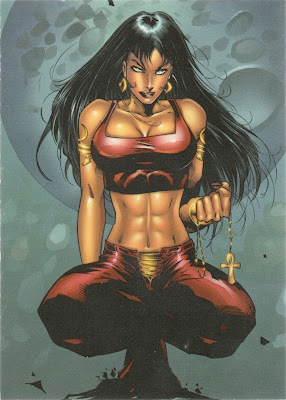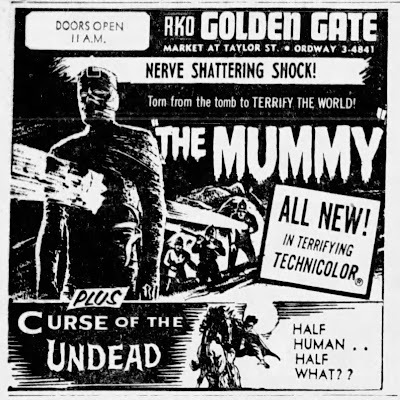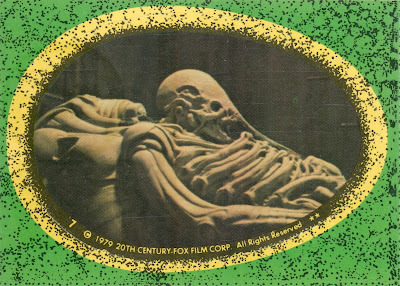Chadwick H. Saxelid's Blog: Ghoulies, Ghosties, and Long-Leggedy Beasties, page 4
September 16, 2025
Godzilla Versus The Thing [Mothra vs. Godzilla, Mosura tai Gojira (1964)] / Voyage to the End of the Universe [Ikarie XB 1 (1963)] - Newspaper Ad
 Oakland Tribune - September 16, 1964
Oakland Tribune - September 16, 1964Godzilla's fourth cinematic outing is considered something a of high-water mark for the franchise. It features some of Eiji Tsuburaya's best effects work and the Big G's final performance as malevolent heel, before transitioning into a heroic and humanity defending giant monster.
The second feature is a retitled and trimmed down Americanization of a ponderous Czechoslovakian science fiction picture. Perhaps one might watch Tarkovsky's Solaris or Stalker, instead. Just a thought.
Alien (1979) - Stricker #7
September 15, 2025
The Long Walk (2025) - Review

My earliest recollection of The Long Walk is from the early 1980s. A friend of mine was reading an edition of it that he had checked out from our High School library. The striking cover art both caught my eye and burrowed into my memory.
 I love how the film's primary poster art is just a modified version of the original cover art.
I love how the film's primary poster art is just a modified version of the original cover art.Too bad it did not burrow deep enough to motivate me to read the damn thing. The only reason I can think of as to why I gave the book a pass is that it was marketed as science-fiction and, at that particular time, I wanted to read horror and only horror. If a book did not have ghouls, ghosts, or beasts in its title or plot description, I had zero interest in reading it.
Which was my loss, of course.
I did not crack open The Long Walk until 1987, maybe 88, when it was reprinted and released as part of The Bachman Books omnibus. While each of the four books in that collection had their merits, I felt The Long Walk to be the quartet's most harrowing and memorable read.
Descriptive passages and dialogue from the book have stuck with me and haunt me to this day. A few of those moments managed to make it into this film adaptation that, for decades, I believed was impossible to make.
Because the entirety of The Long Walk is a death march. One hundred (in the book) male youths "volunteer" to walk along a road at an enforced pace, without slowing or stopping, for as long and as far as they can.
When a walker does slow, or is forced by biological necessity to stop, they get a warning. There is a first warning. A second warning. Then a third, and final, warning. Then they are killed.
The walk goes on and on and on and on... until only one is left alive. That is the winner. If you consider that to be winning...
There were two primary reasons for why I thought a faithful film version of The Long Walk impossible to make. First was the subject matter being just too grim for feature film treatment. Second was the cinematic hurdle of making young men marching along a dilapidated highway, and getting knocked off one by one by one with zero mercy, visually interesting and/or dramatically compelling. That is a tall order.
But damn, screenwriter J.T. Mollner (Strange Darling) and director Francis Lawrence (The Hunger Games, etc.) somehow manage to translate the bleak ferocity of The Long Walk into a film that, for the most part, works. And does so without taking too many damaging liberties with its harrowing and horrifying source material. But liberties are taken and, well, mileage will undoubtedly vary regarding whether or not they do or do not work in the film's favor.
It begins just as the novel did, with Ray Garraty (Cooper Hoffman) being dropped off at the long walk starting line by his distraught and disapproving mother (Judy Greer). I was sad to see that the signpost commemorating the earliest ever ticket punch was absent. So it goes.
The number of walkers is downsized from one hundred to "only" fifty. Of that group a small percentage is allotted enough dialogue to allow for a modicum of character development. Most of the walkers that do not have any dialogue are the earliest and quickest to get thinned from the group. Save for the very first, played by Roman Griffin Davis (Jojo Rabbit).
As their numbers dwindle, exhaustion and desperation grow. The film does a decent enough job of showing that exhaustion and desperation ebb and flow through the walkers. Because nothing quite gets the adrenaline pumping as fast and as hard as somebody close by, or that you have befriended, getting their ticket punched.
When the film began, I wondered if, perhaps, it was an adaptation that took too long to be made. What with Battle Royale, The Hunger Games, and even Squid Game having covered and mined the very same thematic ground as The Long Walk.
But what differentiates The Long Walk from those others is its stark and unapologetic simplicity. The ending of the book lacked a dramatic catharsis, leaving its readers to wonder what, if any, point was being made. I think that complete and utter absence of catharsis is part of what makes the book so haunting for me.
The film attempts to inject something akin to a ray of hope into it, but it did not work for me, at all. It felt forced, clumsy, and left a sour taste in my spirit. Because I think the movie lied to its audience about what The Long Walk was saying.
King wrote the book when the draft plucked young men out of their day to day lives of quiet desperation and dropped them into the meat grinder of war. I read the book in the aftermath of that era, before school shootings became a semi-regular fact of life.
Post Columbine and Sandy Hook, The Long Walk should have stuck to its core message of America thoughtlessly sacrificing its youth for some make believe greater good without any real benefit or good being achieved.
That the walk never truly ends and nobody really wins. As The Major himself (Mark Hamill) says, there is no finish line. Save for death, it seems.
As much as I appreciated most of The Long Walk, its ending stumble might have ruined it for me.
Well, there is still the book, at least.
Don't Open the Window [Let Sleeping Corpses Lie, No Profanar El Sueño de Los Muertos (1974)] - Newspaper Ad
 San Francisco Examiner - September 15, 1976
San Francisco Examiner - September 15, 1976Now best known as Let Sleeping Corpse Lie, I think I first saw Don't Open the Window when it was titled The Living Dead at the Manchester Morgue, maybe. I do know it was not titled Breakfast at the Manchester Morgue or Do Not Speak Ill of the Dead. My oldest and bestest friend also had the theatrical one sheet for Don't Open the Window hanging in our dorm room. The one sheets for Body Double and Godzilla 1985 were on my side of the room, by the way.
This was yet another one of a plethora of Don't titled films that were joyfully roasted in Edgar Wright's stellar mock-trailer for the fictional film Don't. I also like how the distributor for Don't Open the Window also recycled its infamous and effective tagline for Wes Craven's infamous and effective The Last House on the Left (1972).
Coupled with the release of Don't Open the Window was The House That Vanished (1973). Its original title appears to have been Scream... And Die!, but it also sported the moniker Don't Go Into the Bedroom at one point. There's that Don't moniker again.
Since the company distributing The House That Vanished just so happened to be the same one distributing Don't Open the Window, their lurid "It's Only A Movie... Only A Movie... Only A Movie..." hyperbole was once again to put to use. Hey, if ain't broke...
Lady Death: Dark Alliance - Trading Card #21
 Sakkara Triumphant
Sakkara TriumphantStranded on earth apart from Purgatori, Sakkara had come to grips with her own abilities, powers, and sexuality. It was her own inner strength that enabled her to hold her own against Purgatori.
September 13, 2025
September 12, 2025
Strange Pictures by Uketsu - Review

Dr. Tomiko Hagio, a psychologist turned lecturer, affixes a picture to a classroom blackboard. She explains to the students that this picture was drawn by a child who, at the age of eleven, murdered her own mother. Hagio then points out subtle, easy to overlook details in the drawing.
These details suggested to Hagio that the child harbored an inner kindness and a desire to protect. Qualities that, if nurtured via behavioral therapies, could counter and diffuse the child's murderous aggression. Dr. Hagio shares how the child responded well to this approach and is now a grown woman and happy mother...Shuhei Sasaki, a twenty-one-year-old college student, becomes obsessed with a discontinued blog and the strange illustrations that were posted on it...
Yuta Konno, a six-year-old, draws an enigmatic picture of where he lives with his mother. A drawing that triggers disparate reactions that, in turn, uncover long buried secrets...
Yoshiharu Miura, a forty-one-year-old art teacher, is brutally murdered while camping. Three years after the crime, an eager would-be-reporter unravels the hidden meaning in a picture Miura had drawn on the night he was killed...
Learning how and why the stories behind these strange pictures were connected was equal parts delightful and chilling. The pseudonymous-writer known as Uketsu has crafted an intricate mystery that spans decades and contains plot twists that would have made Agatha Christie seethe with jealously.
When I cracked open Strange Pictures, I suspected the mysteries and enigmas of the titular illustrations might be pieces of a much larger puzzle. What surprised me was just how blood-curdling the completed image turned out to be.
I discovered Uketsu via the manga adaptation of their story/novel Strange Houses, which is why I was quick to pick up and crack open Strange Pictures.
This book confirms and showcases Uketsu's unique talent for crafting a labyrinthian and multi-layered mystery capable of chilling the blood as strongly as it challenges the mind. I am excited and eager to read whatever comes next from the imaginative mind of Uketsu.
The Fog (1980) / Phantasm (1979) - Newspaper Ad
 Oakland Tribune - September 12, 1980
Oakland Tribune - September 12, 1980The listing box in the lower right hand corner, next to the See Theatre Guide for Policy, is where I saw this re-release double-bill of The Fog (1980) and Phantasm (1979). The Century, at that particular time, was a two-screen dome theater. It was where I first saw The Swarm (1978), Orca (1977), The Thing (1982), Halloween III: Season of the Witch (1982), The Enforcer (1976), An American Werewolf in London (1981), and many, many more.
It was also where I would first see Phantasm. We had already seen The Fog, which had been released earlier that same year, at the Coliseum Drive-In. There it had been paired with a reissue of House By the Lake (1976). A movie that my father refused to sit through.
My dad did sit through Phantasm and, because he would jerk and jump in his seat, I legit thought it was because he was scared. Turns out he had been writhing in utter agony at having to be forced to sit through what he considered to be a rancid and godawful hunk of cinematic junk. At least he held back his raging contempt for the film until it was over, so my brother and I could enjoy it in peace.
The Fog had been well underway when we had arrived, so dad let us stay and watch the film until it reached the scene we had entered at. That is when he snapped, "We are not sitting through the rest of this thing for a second time, let's go." Which we did.
I also remember the TV spots for this re-release:
Spot 1 -
Spot 2 -
These spots may have gotten a generous amount play during the commercial breaks for the Captain Cosmic show, as well as those for Chiller Diller and/or Creature Features, on KTVU. Which is probably why I remember them with such clarity and fondness.
Alien (1979) - Sticker #6
September 11, 2025
The Mummy (1959) / Curse of the Undead (1959) - Newspaper Ad
 San Francisco Examiner - September 11, 1959
San Francisco Examiner - September 11, 1959Bryan Senn, in his book Twice the Thrills! Twice the Chills! Horror and Science Fiction Double Features, 1955 - 1974, describes The Mummy (1959) as being, "Tightly plotted, efficiently directed, superbly acted, sumptuously dressed, and featuring a number of tense and exciting action set-pieces..." [P. 168] I whole-heartedly concur.
Although The Mummy shares its title with the classic 1932 Karloff feature, its plot elements were taken from the plodding programmers that Universal Pictures released in the early-to-mid 1940's. Unlike those repetitive and patience testing outings, Hammer Film's version contains an attention holding amount of energy and ferocity. Which is why this particular entry remains an all-time favorite of mine.
Coupled with The Mummy is the vampiric weird western Curse of the Undead. Although it began as a silly lark of writing practice for the husband and wife team of Edward and Mildred Dien, a producer saw its potential. So the joke was reworked into something a tad more serious and a minor classic was born.
Curse of the Undead is one of a trio of weird westerns that I remember watching on television as a youngster. The other two were the infamous Billy the Kid Versus Dracula (1966) and Jesse James Meets Frankenstein's Daughter (1966).
I have no idea as to the order I first saw them, but Curse of the Undead is the best of them, by far.
Ghoulies, Ghosties, and Long-Leggedy Beasties
- Chadwick H. Saxelid's profile
- 19 followers





